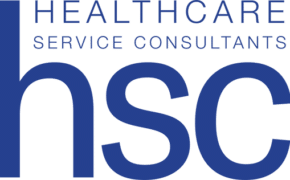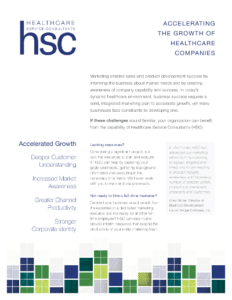
Almost everyone has seen at least a clip of the popular game show, The Price Is Right. There are many games in which contestants must guess the price of a product. In some cases, doing so helps them get more “Plinko” discs with the chance of winning cash prizes.
The healthcare IT landscape is not a game show in any regard. Yet, there are stakes in promoting the “right price” on your healthcare IT product. The next step is ideating the right messaging that will help promote your healthcare IT product.
It’s important to ensure the product addresses prolific and impactful problem statements. Not only that, messaging should communicate benefits of the product to target audiences and personas. This also plays an important role in defining competitive pricing and packaging strategies. Strategies should reflect the value and delivery models of a product. They are crucial for revenue realization. Unfortunately, pricing and packaging strategy often occurs in a vacuum. It is often kept separate from discussions about overall product value.
This blog discusses the relationship between product messaging and differentiation on value-based pricing. We explore various packaging models to maximize product and service revenue.
Price Based on Value
Many early healthcare IT organizations fall into the trap of setting pricing based on competitive offerings (competitor-based pricing). Or, setting prices based on cost-plus-markup (cost-based pricing). This is a big mistake!
On one hand, you could be underpricing your product based on the value delivered. This can be difficult to correct after you launch your product to market. On the other hand, it can be more difficult to justify the price when the pricing doesn’t align with the perceived value and expected return on investment (ROI). This is increasingly true as a hospital seeks to only purchase products with a clear and short-term ROI—particularly in the wake of the EHR adoption cycle and the effects of COVID.
Instead, product value should be the focus when determining pricing for a product or service. When healthcare IT products address a new problem area or solve existing problems in more efficient or effective ways, healthcare IT companies should price them at a premium level.
In healthcare, systems value a product by measuring the tangible benefits delivered. Pricing needs to assess the degree to which they set your products apart from those of your competitors. These benefits are most often defined by your product marketing department as part of the positioning and messaging effort.
Align Packaging and Pricing
In the healthcare IT world, packaging often refers to software feature bundling and licensing models. This is another key consideration when defining value-based pricing. Packaging should maximize the differentiating benefits and value of how you deliver products to customers and support post-implementation.
For example, a common packaging model is to price based on volume tiers, such as:
- number of beds
- procedures
- users
This model aligns with an organization’s size and the costs of healthcare it will deliver. Yet, it may not consider the ROI associated with non-linear benefits that may include:
- improved patient outcomes
- creation of new revenue streams
- increased collaboration or communication amongst care providers
- improved security
A well-aligned packaging model can also simplify decision making during a procurement process. New by comparison, subscription models (e.g. SaaS) have changed healthcare IT products in pricing, packaging, and delivery. By bundling products as services and charging monthly fees, healthcare organizations can tap into operational budgets, rather than difficult-to-access capital dollars. If the monthly fee is low enough, influencers with limited budget authority may be able to make decisions without involving executive decision makers. This lower cost strategy can speed product adoption, even if only to get one’s foot in the door at an organization.
Prove Value to Maximize Your Price
Aligning pricing and packaging strategies with value-based messaging and differentiation is important. It’s also essential to collect evidence that the stated benefits have helped healthcare organizations. Building ROI models that consider the clinical, technical, and operational value propositions of your offering will deliver the proof-points. Ones needed to justify your pricing model and simplify business case development by key decision makers. These efforts can help simplify and speed up the adoption and sale of your products.
For example:
- Show how your product could help patients get care earlier. This reduces disease complexity and cost of care—which is particularly important for organizations operating under value-based care models.
- Or, articulate how your products can help healthcare providers access more reimbursement dollars. This could either be through increased volume and efficiency, or by qualifying for new reimbursement codes.
Where Does Reimbursement Fit In?
It’s imperative to align value-based messaging and pricing with the way reimbursement occurs among target audiences. Lots of healthcare IT companies focus on soft benefits like productivity, efficiency, soft financial savings. But, they may miss thinking about more tangible (hard) savings or new revenue generation opportunities like accessing additional reimbursement codes or incremental imaging volume.
Different organizations have different financial priorities. Value-based Accountable Care Organizations (ACOs) focus on driving down the cost of care delivery by reducing readmissions and improving outcomes for patients. Fee-for-service models focus on increased volumes or access to new or higher dollar value reimbursement codes.
It is well worth considering how your target audiences perceive value according to their own revenue models when designing your pricing and packaging strategy. If you’re unfamiliar with the reimbursement landscape, engaging a reimbursement expert can help you identify and navigate the different models and opportunities most relevant to your target audience.
Tying It All Together
A well-informed pricing and packaging strategy leverages key product marketing input like messaging and functional differentiation to inform value. When supported by ROI evidence, this can result in a competitive offering that simplifies and shortens the buying process.
Do you need help quantifying the value of your product offerings? How about designing cohesive packaging models that reflect the business processes of your target customers? Our healthcare IT product marketing experts have a deep understanding of healthcare IT product pricing, packaging, and reimbursement. Contact us to learn how we can help your organization.




